Thursday, May 13: This morning I went to the seminar, searching the room for Coffee J’s smiling face. No sign of him. I rang his phone and it was turned off. An hour went by. Another. Finally, he showed up, with bright red face and reeking of soju!! There were no further meetings with co-teachers and we were released at 1:00! Coffee J and I parted ways, as I planned to stay in Gyeongju for the weekend to explore the innumerable “cultural assets” there.
Mr. Che, Seth’s co-teacher, drove us around Gyeongju to see several cultural assets, including: Three Royal Tombs in Bae-ri (tombs of 3 Silla dynasty kings).
We then went to see the Poseok-Jeong site, or the royal playground, which we found fascinating because of the story: During banquets in the last days of the Silla kingdom, the king’s official and noble guests would sit along the watercourse chatting and reciting poetry while cups of wine floated past. One participant would start a poem, or propose a subject for a poem, and would then choose another of the group to finish it. A cup of wine was floated down the channel. If the cup arrived at the chosen person after the poem was completed, all was fine. If not, he had to drink the wine to the last drop.
After this, Mr. Che took us to Oreung Royal Tombs, 5 tombs holding four kings and one queen.
Finally, we explored the Gyeongju National Museum. Gyeongju National Museum has a history of about 90 years. Representing Gyeongju, which used to be the capital of Silla (BC57~AD935), the museum showcases the cultural history of Gyeongju district. Gukeun Memorial Hall exhibits 666 artifacts, which are the personal collection of Dr. Lee Yang-Seon, donated to the museum for preservation purposes. Artifacts from the great tombs of Gyeongju are exhibited: golden crowns, crown ornaments, belts, earrings etc. Approximately 30,000 artifacts were excavated from Anapji Pond. The other galleries exhibit household goods. These various types of items show life in the Royal Court during the Silla Period (Visit Korea: Gyeongju National Museum).
In the outdoor exhibit Area, on the museum grounds, we see King Seongdeok’s Bell. It’s the most renowned of Buddhist temple bells. Buddhist sculptures make up the majority of the stone artifacts.
On the grounds of the museum, we see a Standing Stone image of Avalokitesvara, which seems to have been made during the 8th century during the Unified Silla period.
We also come across a Standing Stone Buddha image. Both Buddha and his halo were carved from one large piece of granite and it seems to also be from the mid-8th century.
Mr. Che took off after that, and Anna, Seth and I walked to Anapji Pond, a lovely spot built during King Munmu’s reign to hold banquets celebrating joyous occasions of the country. This place had such a pleasant ambiance, created in part by quiet Buddhist music playing over loudspeakers interspersed through the park.
We were craving a margarita after this long day of sightseeing, so we went in search of one, only to end up in a Flintstones-looking restaurant where the waiters were incredibly snooty and the prices were outrageous. We ended up having a glass of wine and then heading back to our lovely Kolon Hotel.


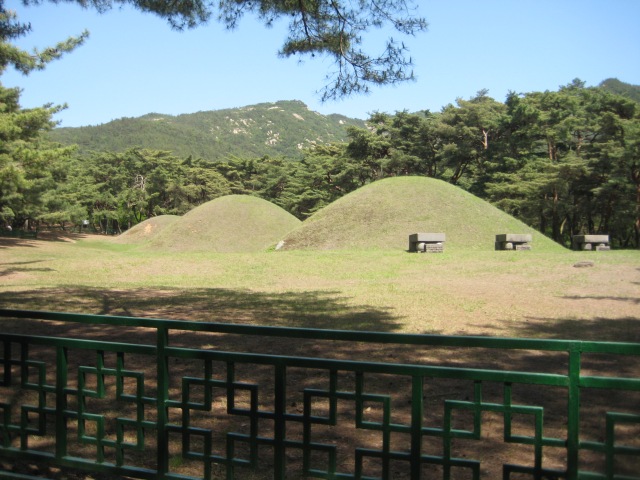


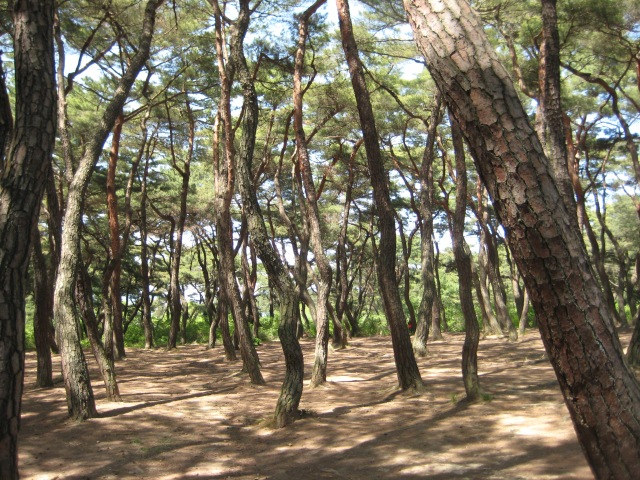




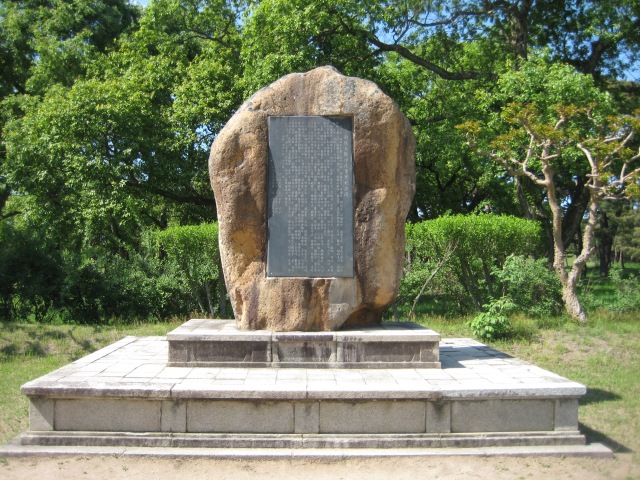




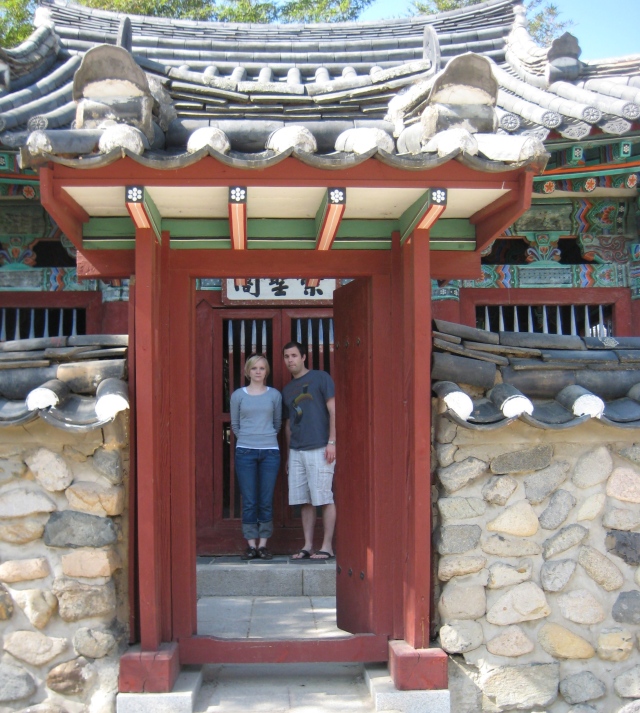
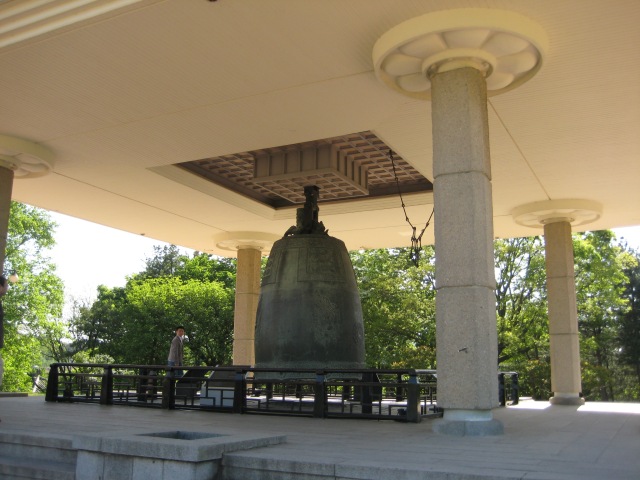
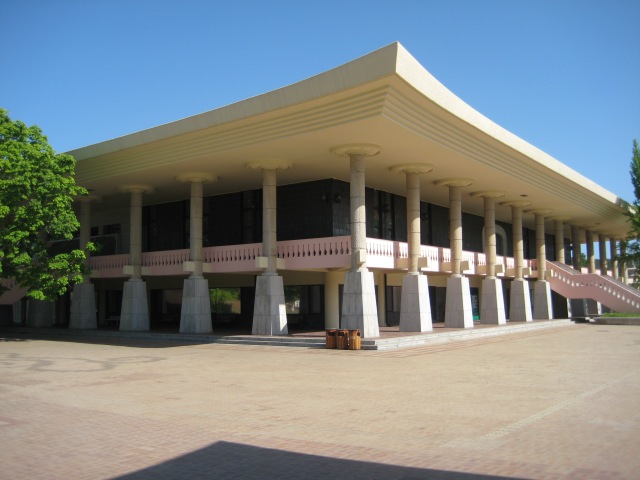



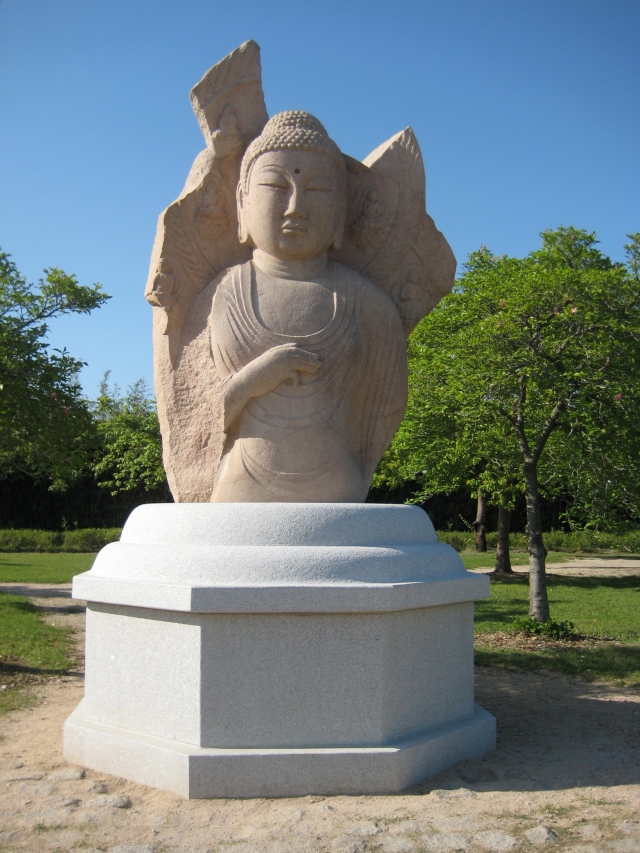
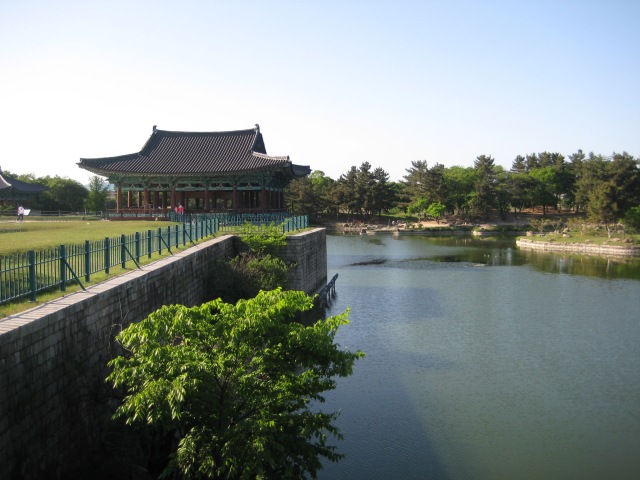
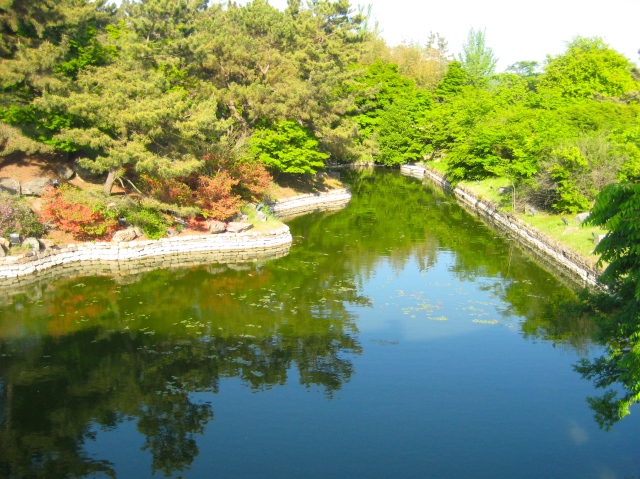


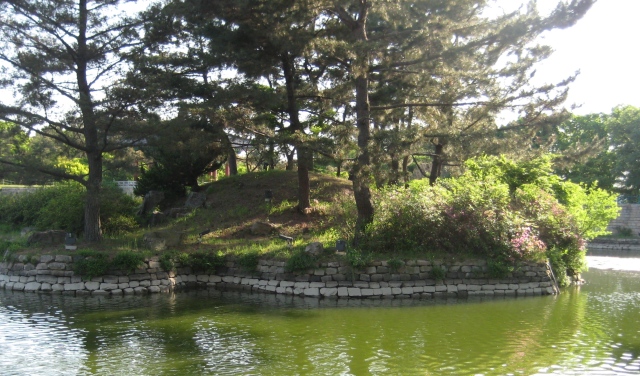





You must be logged in to post a comment.